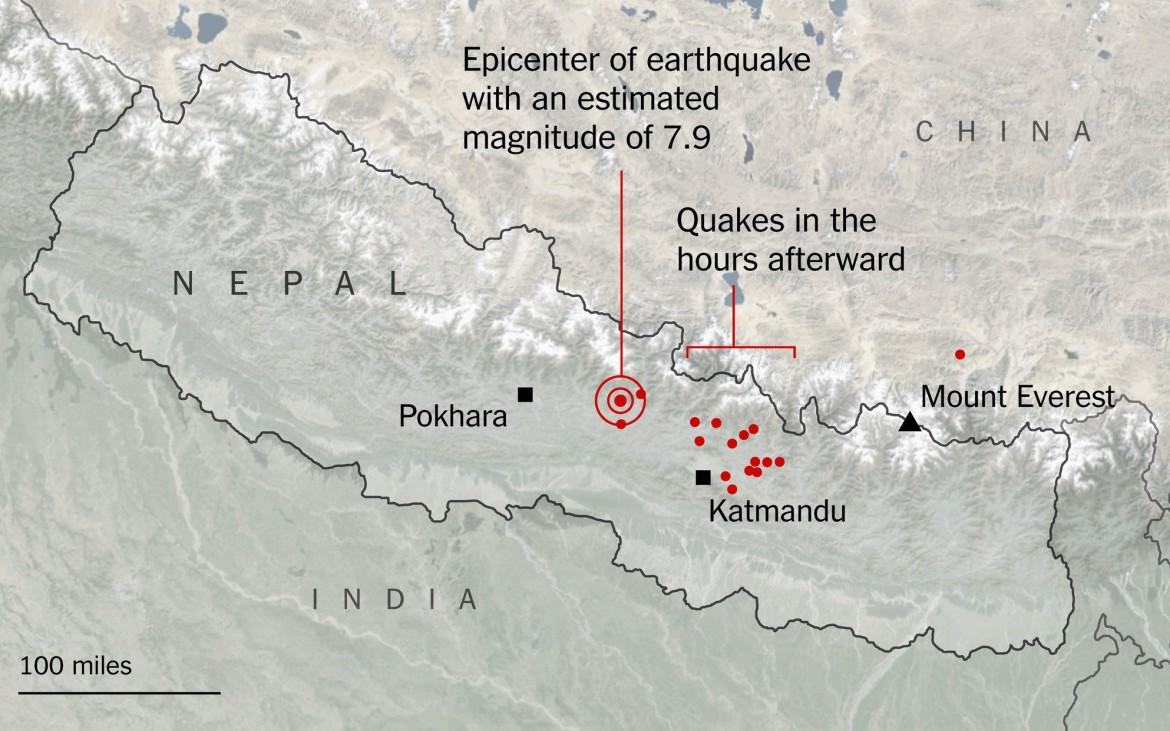Featured Image: USGS
Following a 7.9 magnitude earthquake on Saturday, Nepal’s infrastructure, once erect to serve its people, now lay atop those very people, ultimately killing thousands. The capital, Kathmandu, was hit hardest.
Since the initial seismic event, the U.S. Geological Servey reported an aftershock event Sunday. Originating near Mount Everst, it measured at 6.7 in terms of magnitude. This further raised the death toll.
Nepal, according the United Nations, is one of the world’s poorest and underdeveloped nations. It has some of the least seismicly-secure structures and resides on one of the most active and intense above-water fault zones: The Indus-Yarlang Suture.
This is the same fault responsible for forming the massive Himalayn mountain range, but at the same time, responsible for the 1934, 8.2 magnitude Nepal-Bihar earthquake.
Nearly 10,600 people died and 25 percent of structures fell, according to the Cooperative Institute for Research in Environmental Sciences.
During the initial quake on Saturday, nearly 200 people were climbing the Dharahara Tower when it collapsed, killing 180 in the spire, also trapping 20 in the base. The tower, built in 1832, and overlooking the Kathmandu Valley, was a popular tourist attraction.
“It’s buildings that kill people, not earthquakes,” said James Jackson, head of earth sciences for Cambridge, to the Associated Press. “The construction is appalling in Kathmandu.
Jackson was one of about 50 earthquake and social scientist who visited Nepal last week. The aim of the trip was to offer solutions to secure the poorly-built, but densely populated housing in Kathmandu.
Time moved quicker than their committee.
According to the Nepali Ministry of Health and Population, 1.45 million people live in the Kathmandu Valley.
“It was sort of a nightmare waiting to happen,” Jackson told the AP. “Physically and geographically what happened is exactly what we thought would happen.”
Furthermore, up until 1994, Nepal had no building codes, nor seismic retrofit program. Even when codes and guidelines were enacted from that year forward, enforcement was not, according to the United Nations Educational, Scientific and Cultural Organization.
Further still, the Kathmandu Valley is a World Heritage site. This status preserves the site almost as-is for its historical significance, making alteration difficult. Meanwhile, use of the structures are still permitted.
Now, tens of thousands of the Nepali people have voluntarily vacated their homes for fear of eventual collapse. This has left many truly homeless and exposed.








